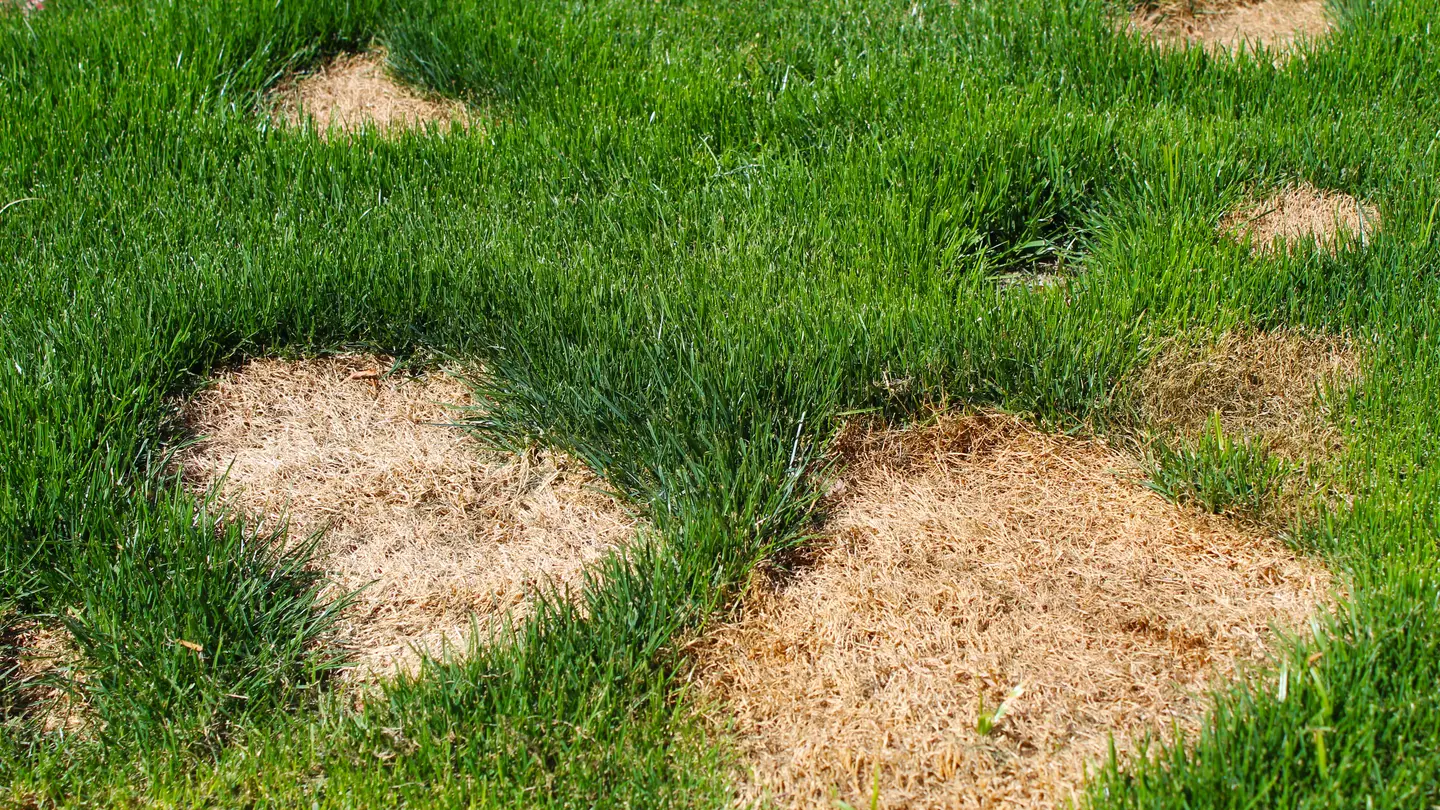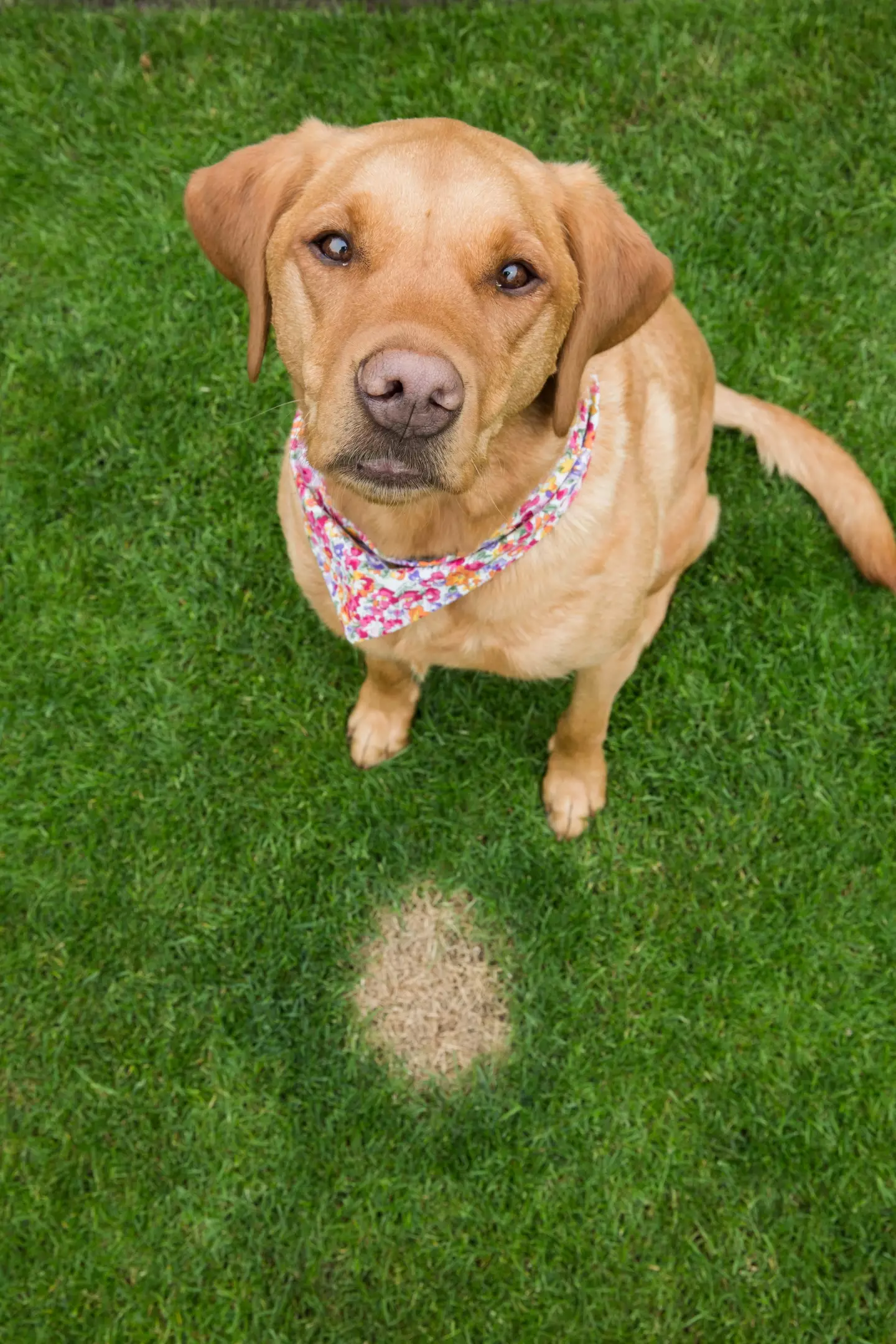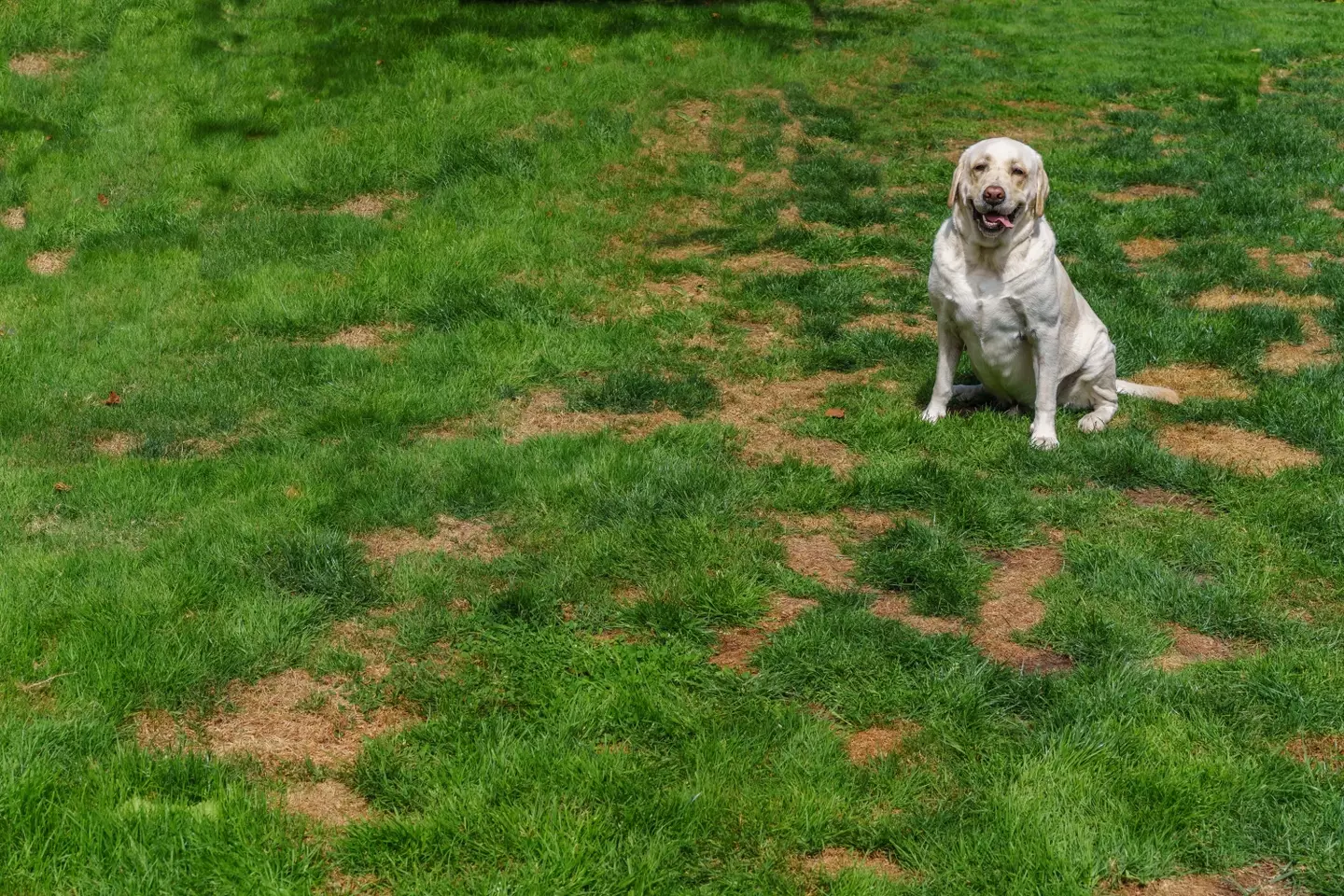
Have you noticed patchy brown marks on your lawn? If you're a dog owner, it could be down to your pup's urine.
Confused by areas of brown grass, one dog owner posted a photo of his front lawn on a Facebook community group. In the picture, the grass could be seen to have several brown areas, where his pooch had regularly gone to the toilet.

So what are the brown patches, and why does it happen?
Advert
Ultimately, dogs' urine burns the grass because it's high in nitrogen. While nitrogen is needed in small doses for healthy grass growth, a concentrated amount will have the opposite effect.
It's often more common with female dogs, due to the way they squat to wee, whereas male dogs will cock their rear leg - often up a wall, post or fence which usually results in a less concentrated amount of urine hitting the grass.
Tyla chatted to Mark Smith, pet care specialist at Pets at Home Group, to find out exactly what we can do.
He said: “To try and prevent lawn burn, pet owners could flush the area with water just after the dog has urinated to dilute and spread the urine out.
Advert
“Dogs should also have plenty of fresh water to help them to stay hydrated and have the opportunity to take frequent toilet breaks. This should reduce the amount of urine passed each time. Owners could also try to encourage their pets to urinate in different parts of the garden to avoid a build-up in one place.
“Pee posts are a great idea to direct your dog to urinate in an area that you don‘t mind the grass burning, or a non-grass area.”

Interestingly, the dog owner who asked for advice on Facebook, also wondered why his local park wasn't covered in 'burn marks' from other dogs out on their daily walks. But Mark explained it's all about the type of grass in different areas.
Advert
“The type of grass can make a difference to how it is affected by dog urine, with some types more resistant than others," he explains.
"It’s likely in public parks that the grass species mix is selected for fast growth and hardiness, whereas lawn grass in our gardens may be selected more for colour.
“The quantity of urine a dog excretes in one go on the grass in a park is really more for dog-to-dog communication rather than relieving their bladder, and that explains why owners will often notice dogs urinating more frequently and in smaller amounts when out on a walk.”

We had never thought of this before! For more info, you can visit the Pets at Home site.
Featured Image Credit: Shutterstock